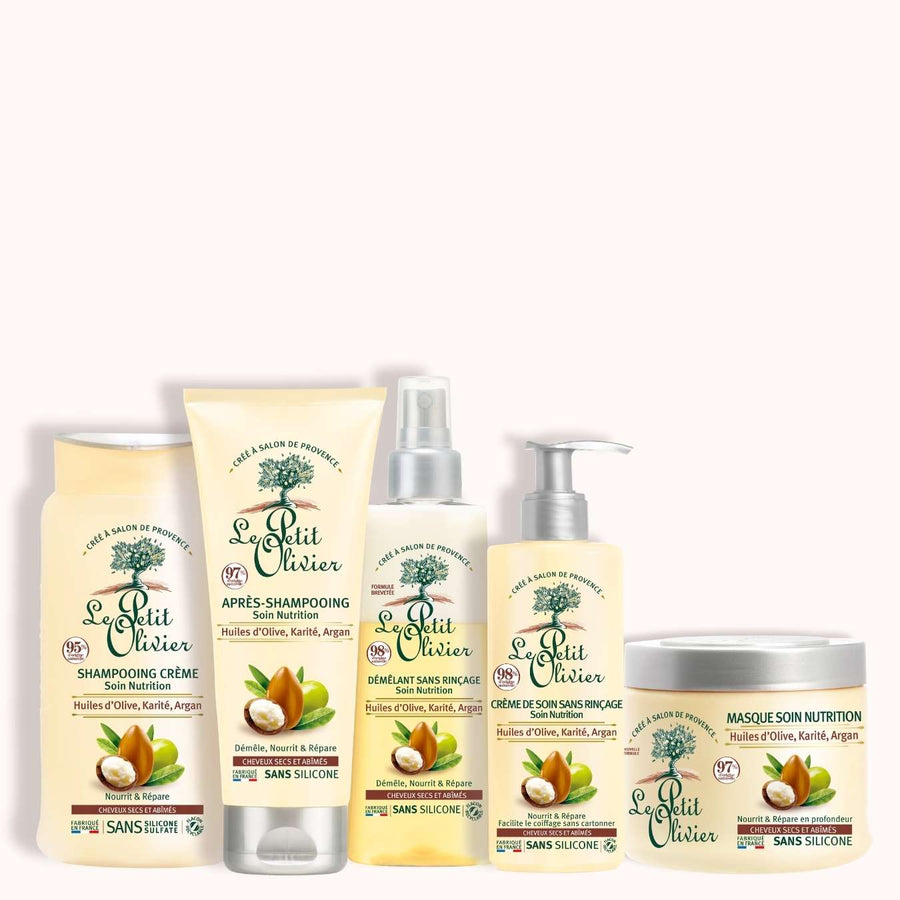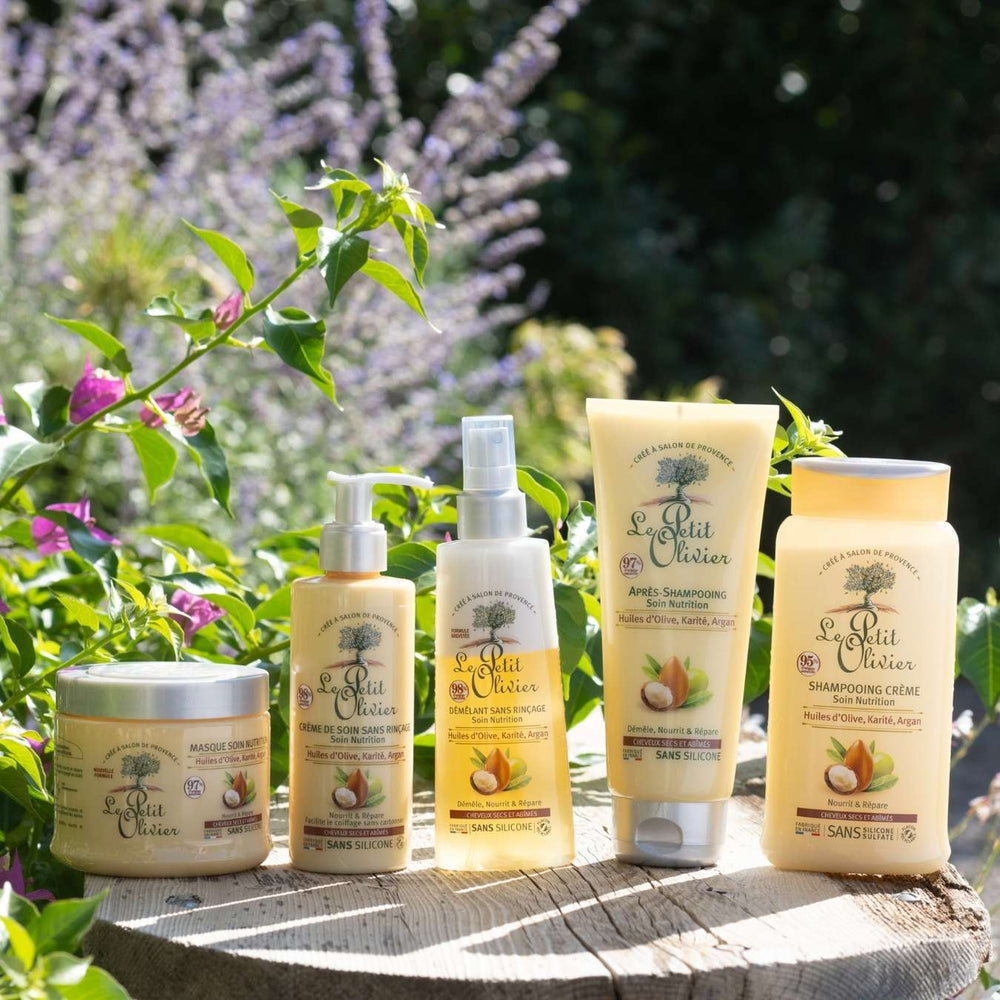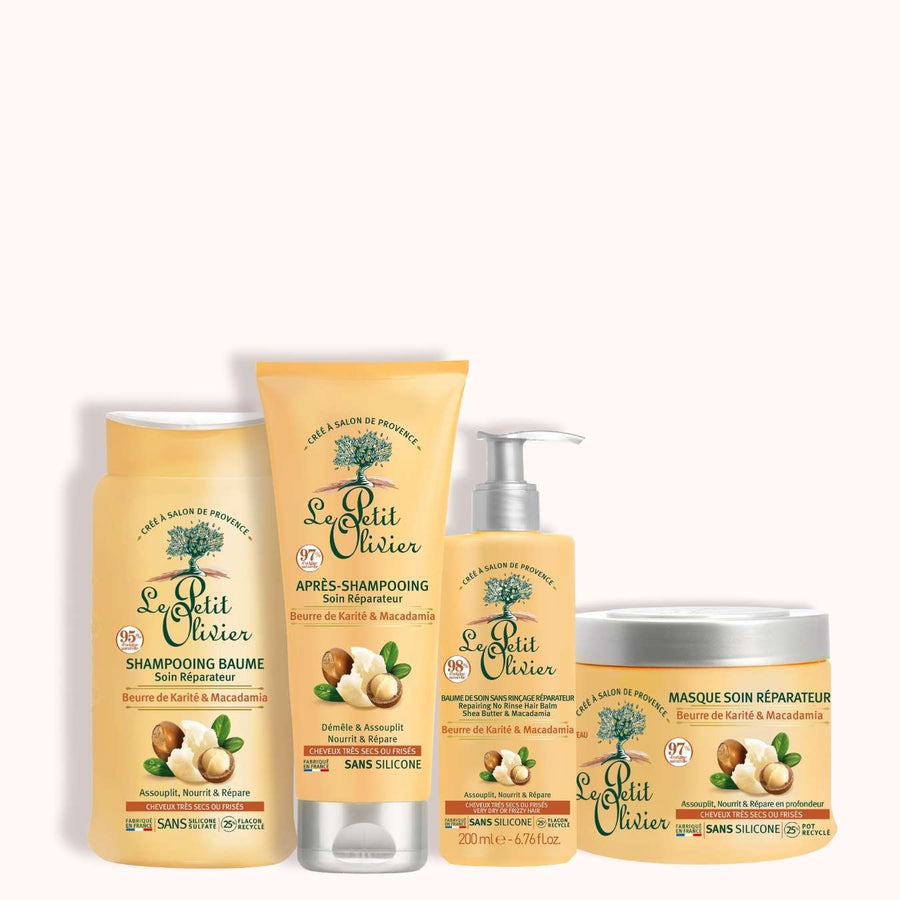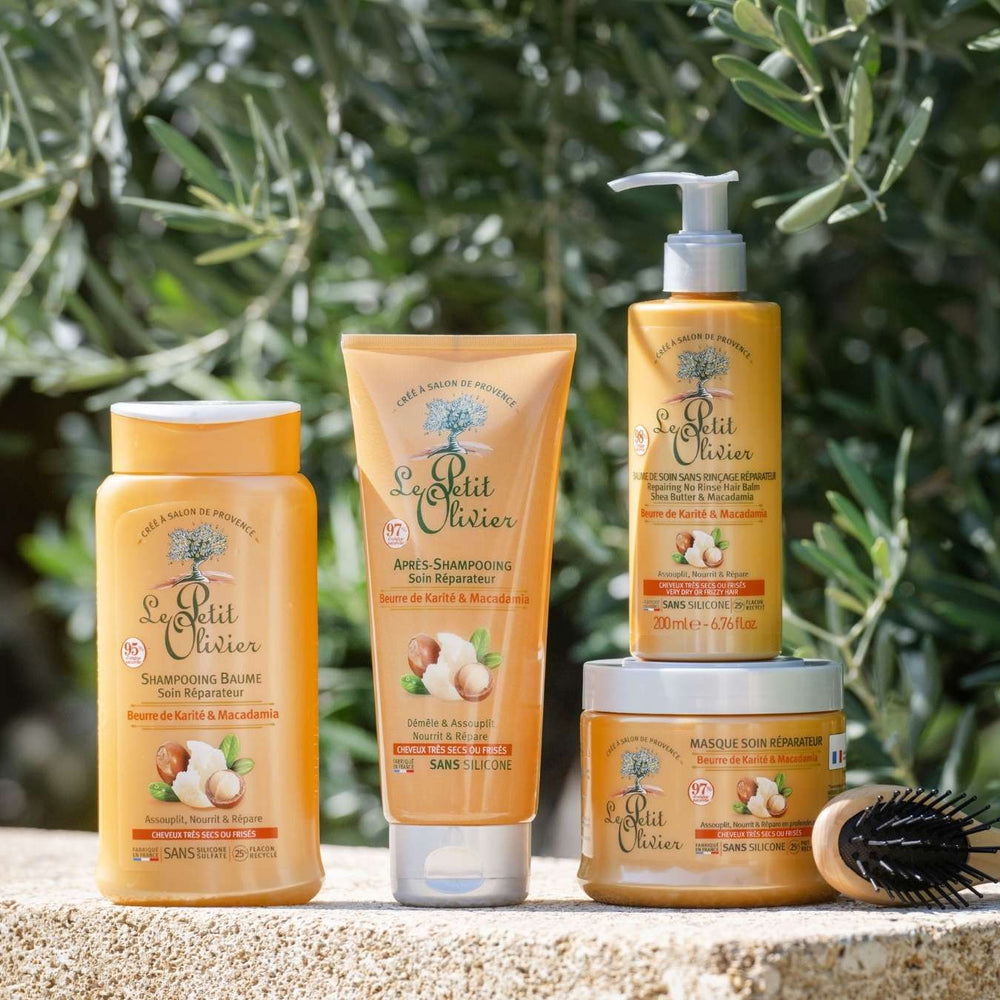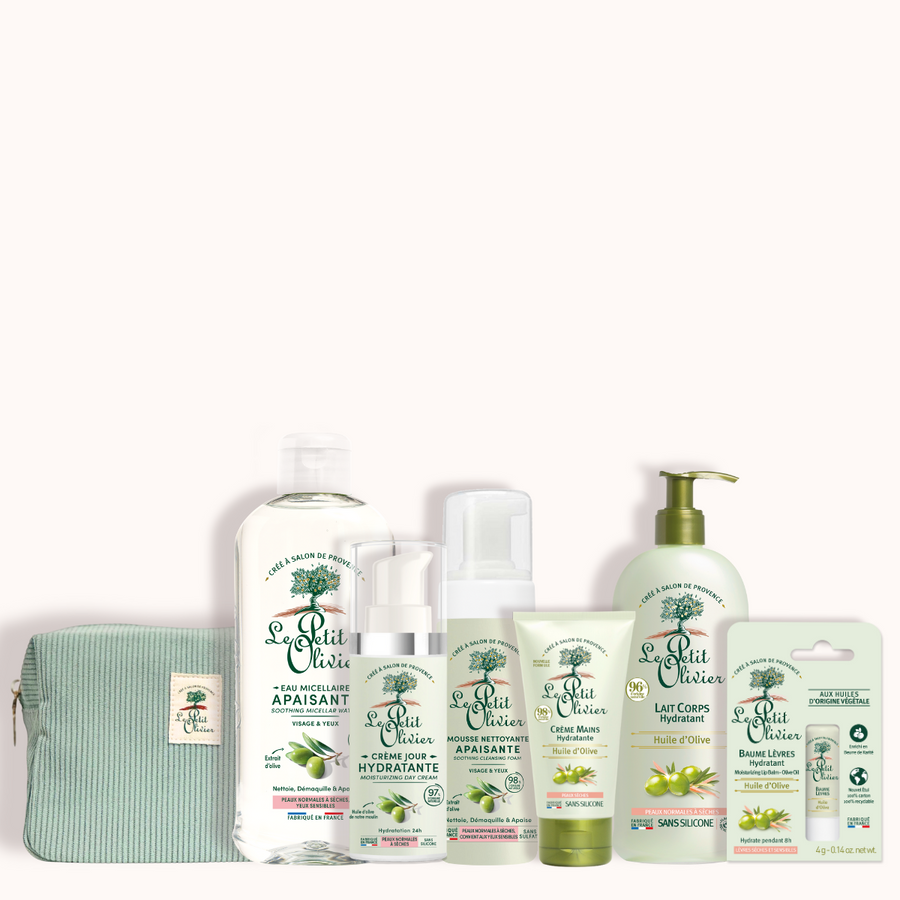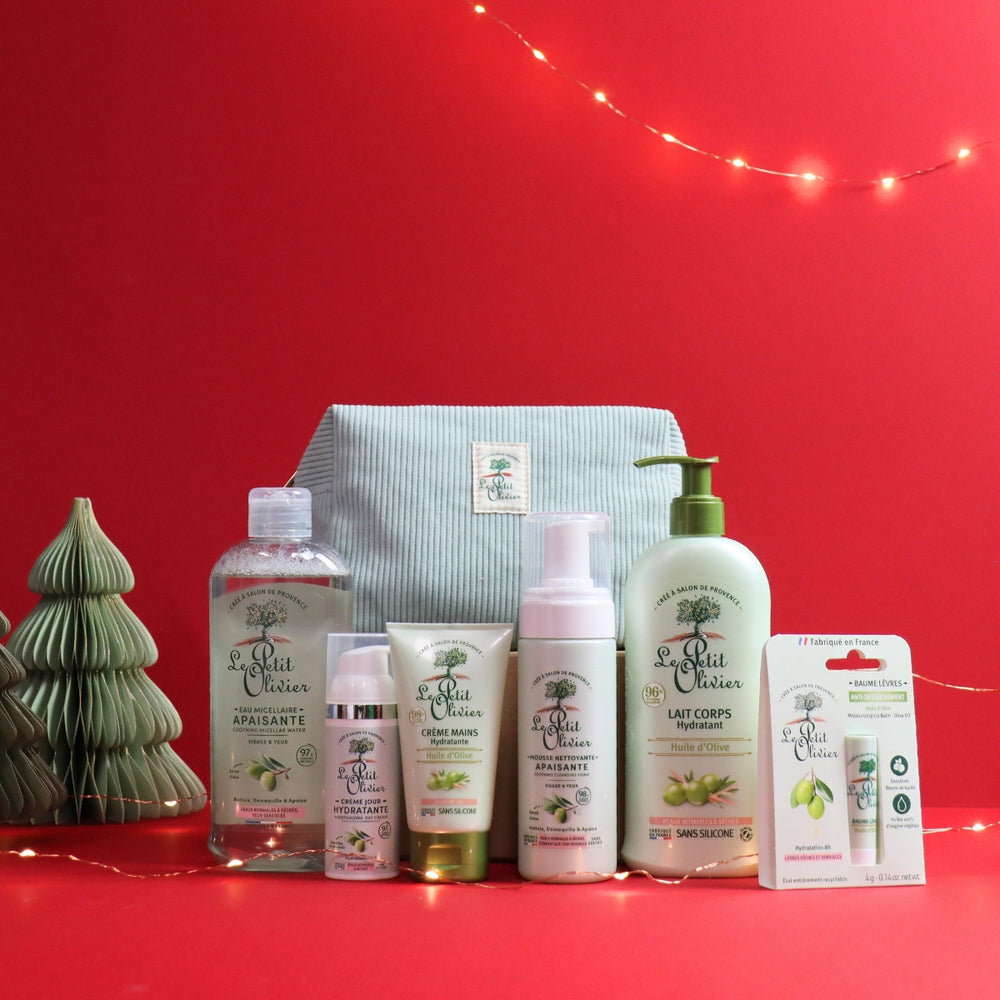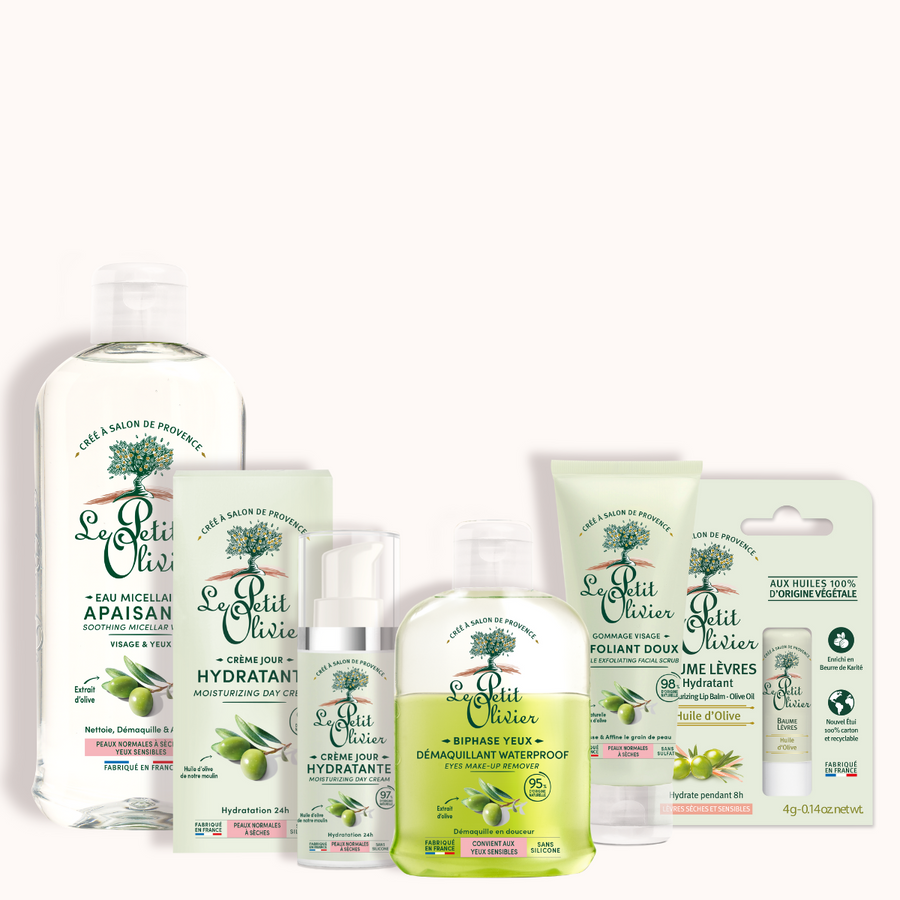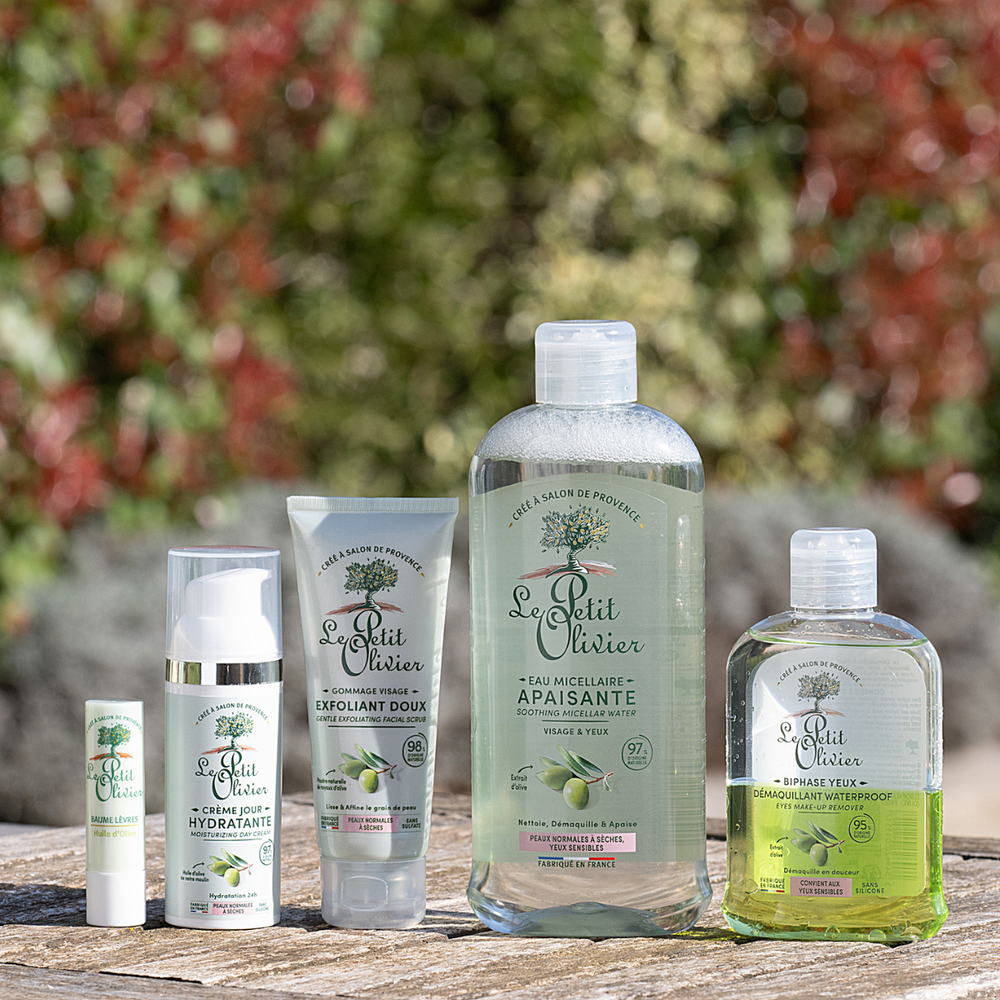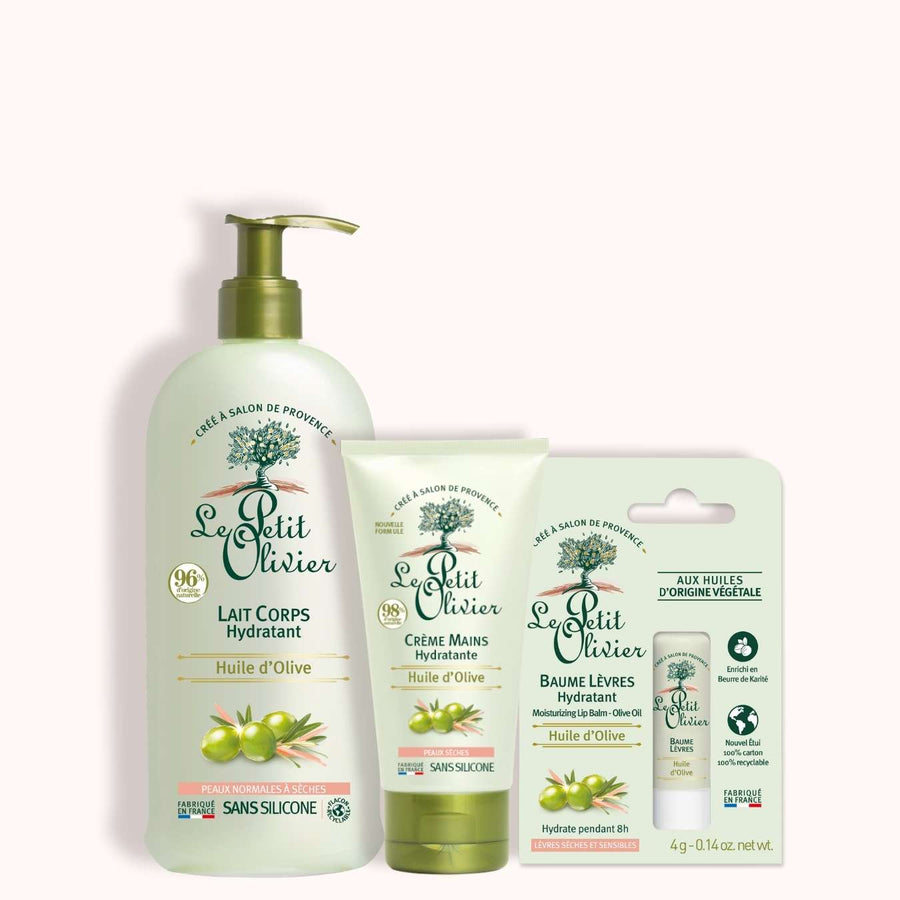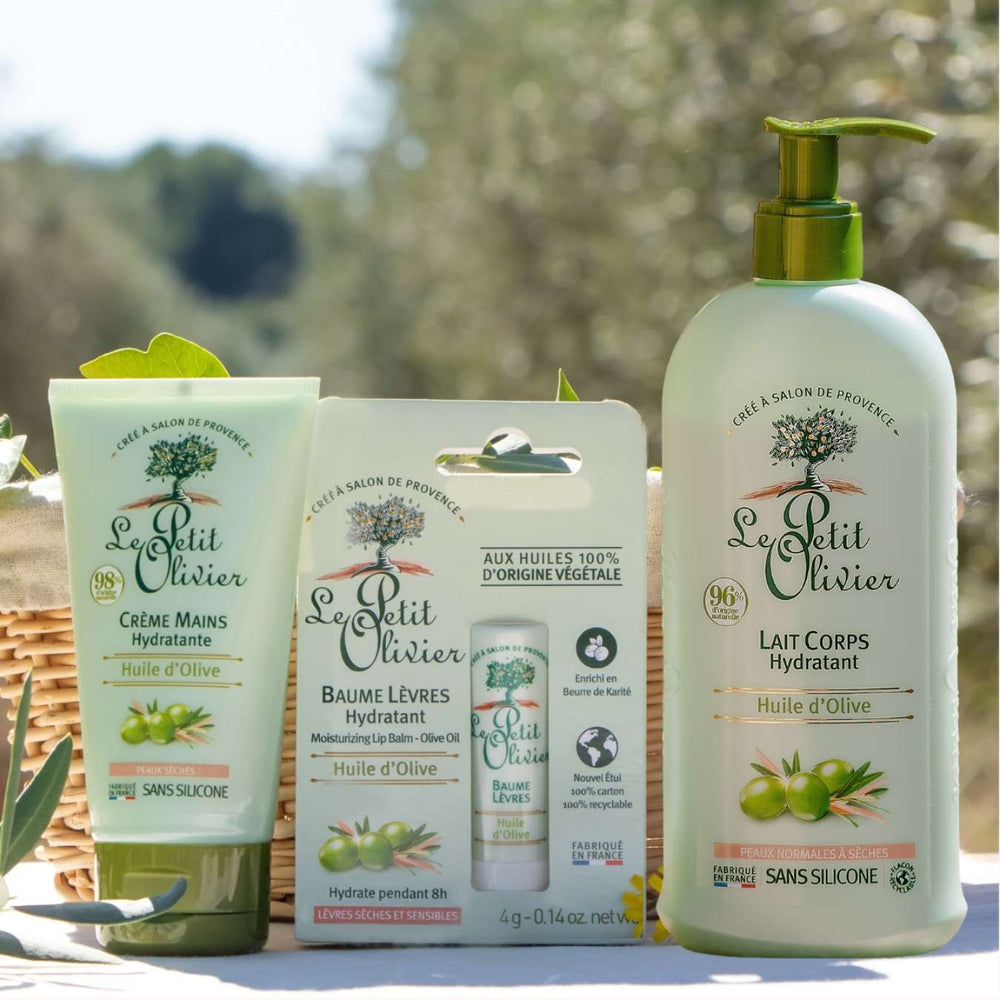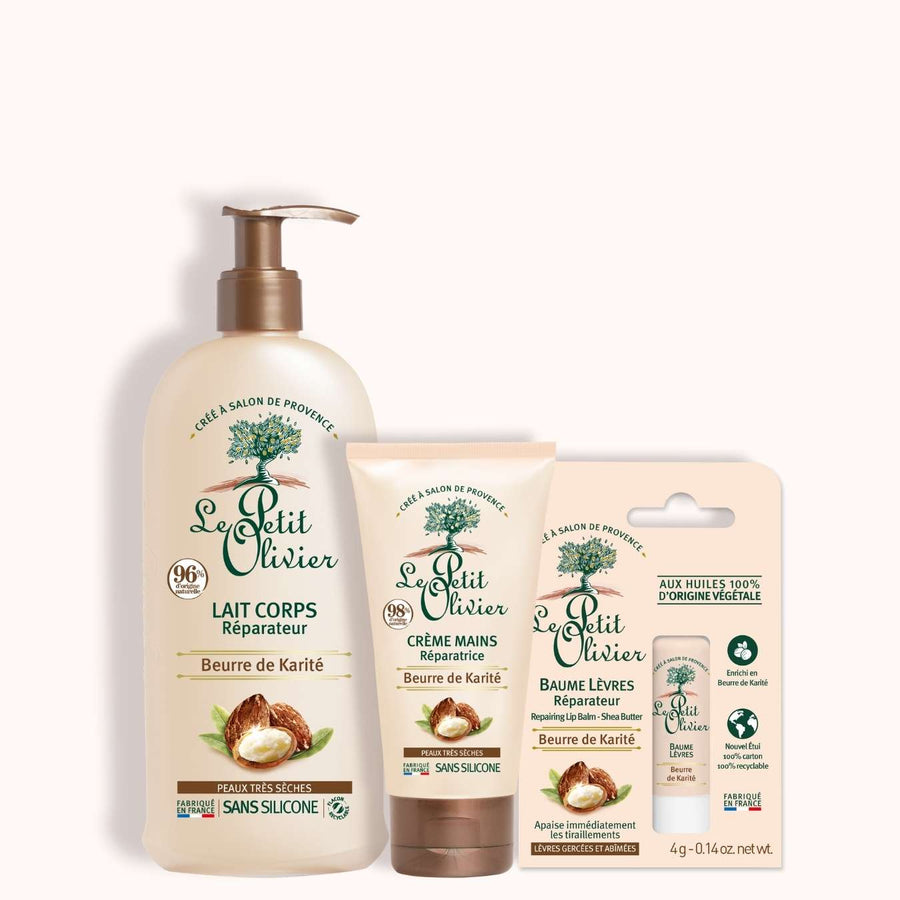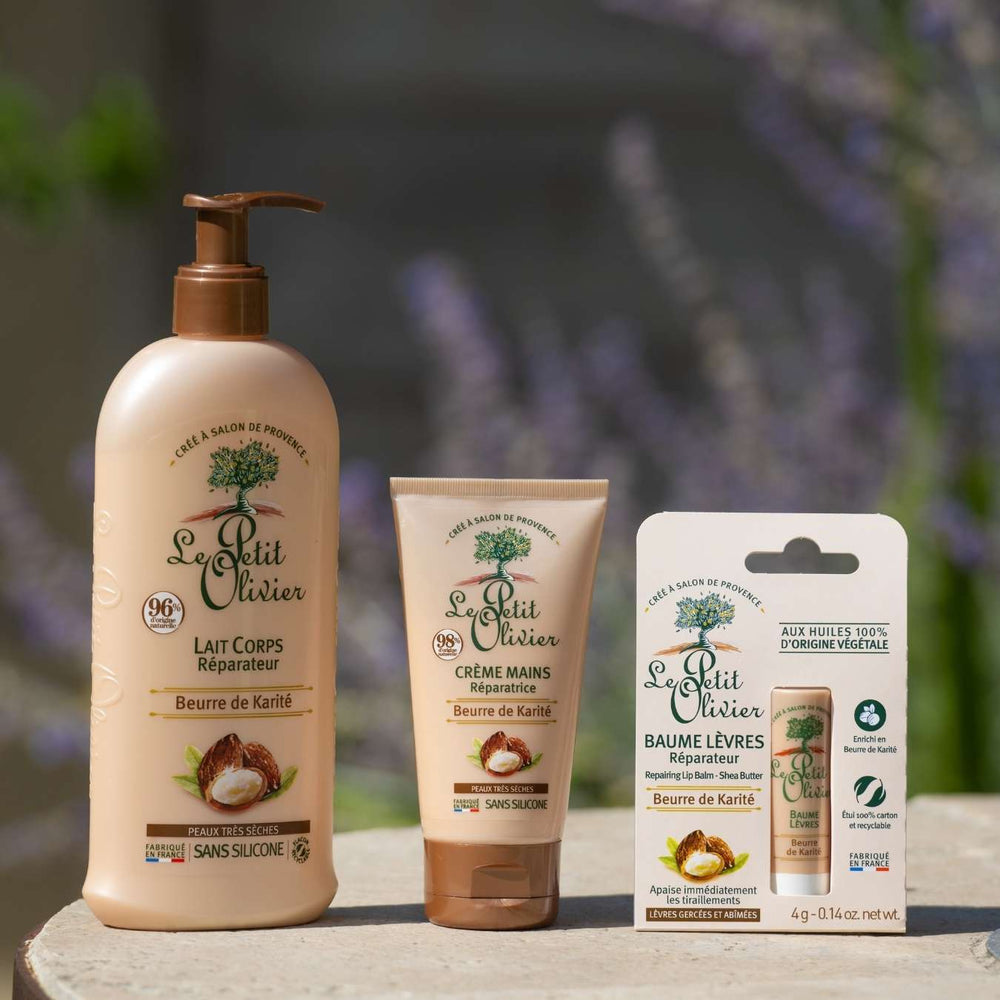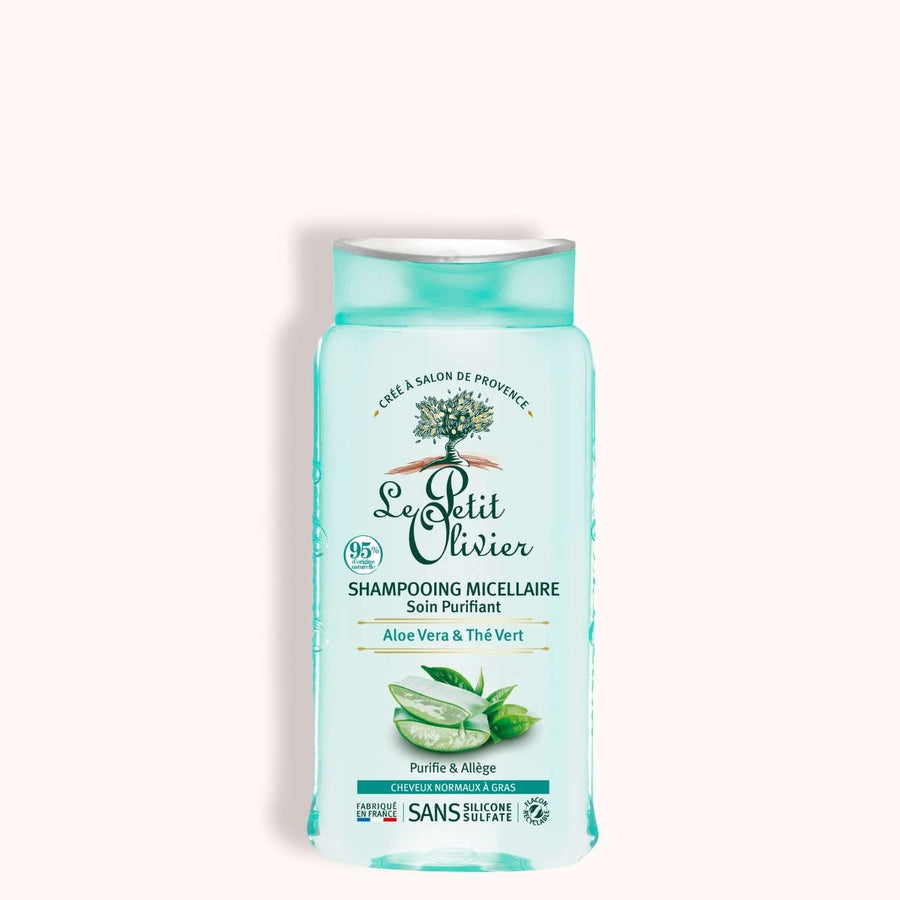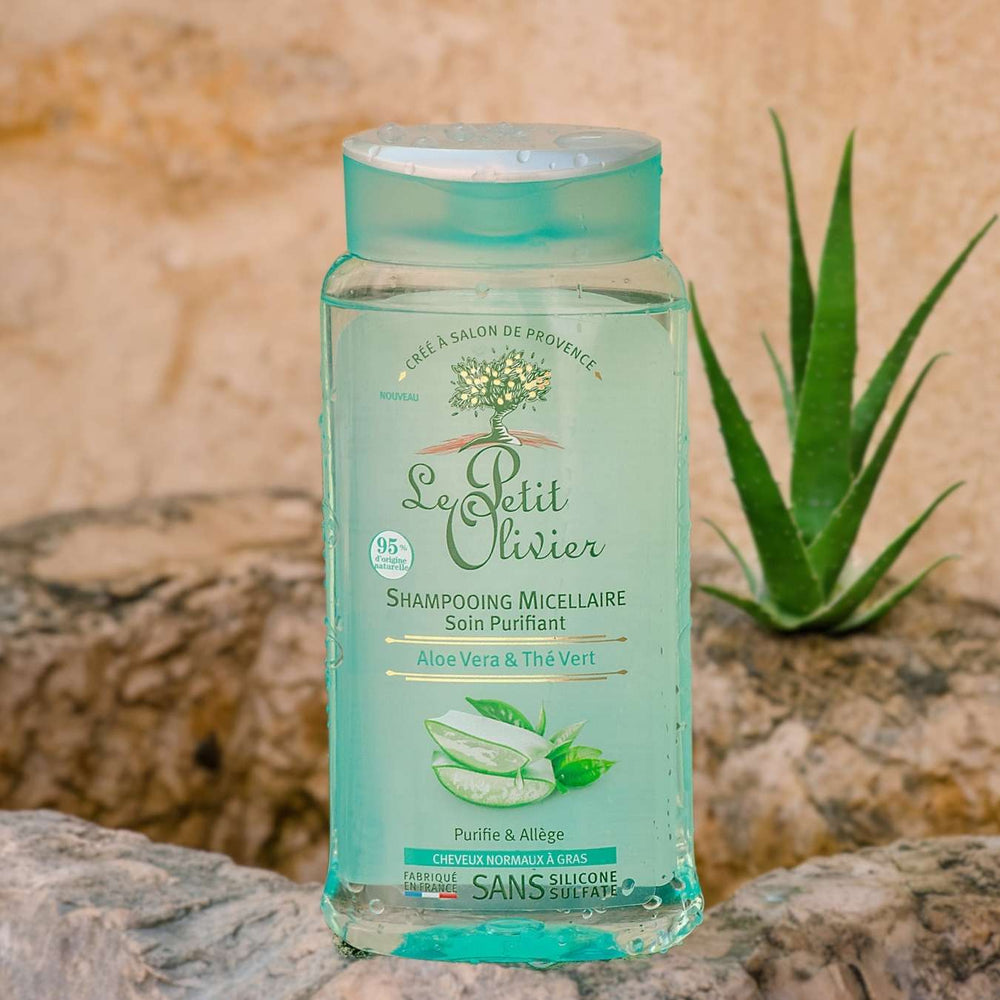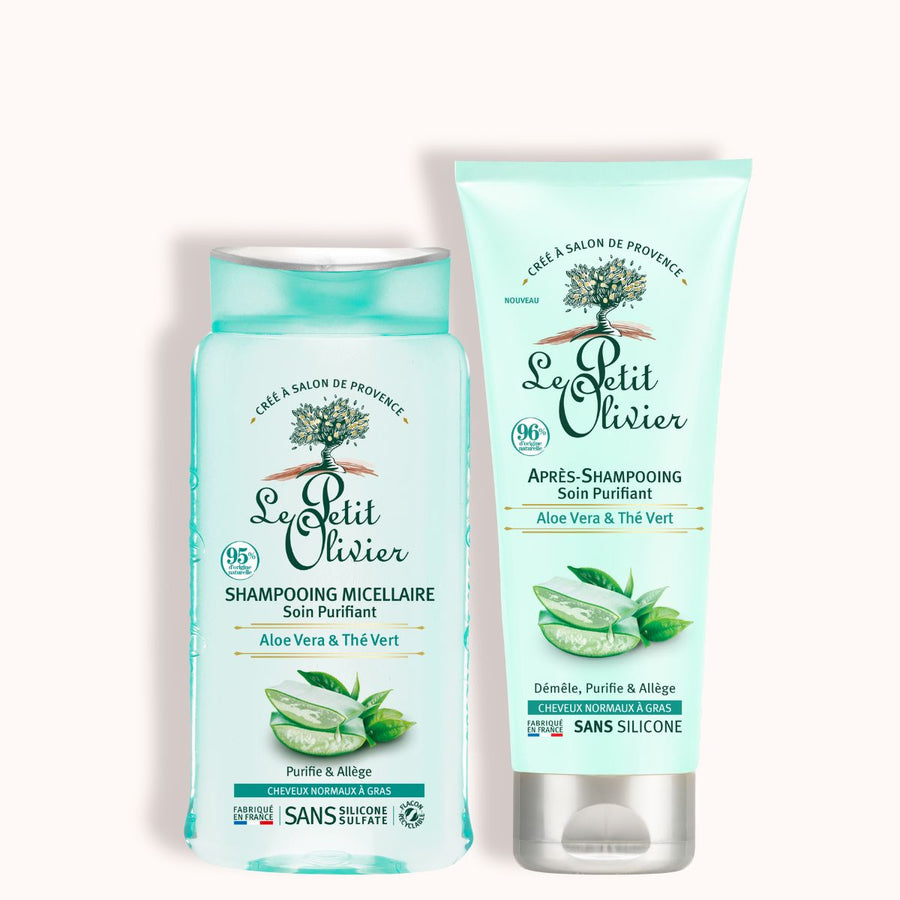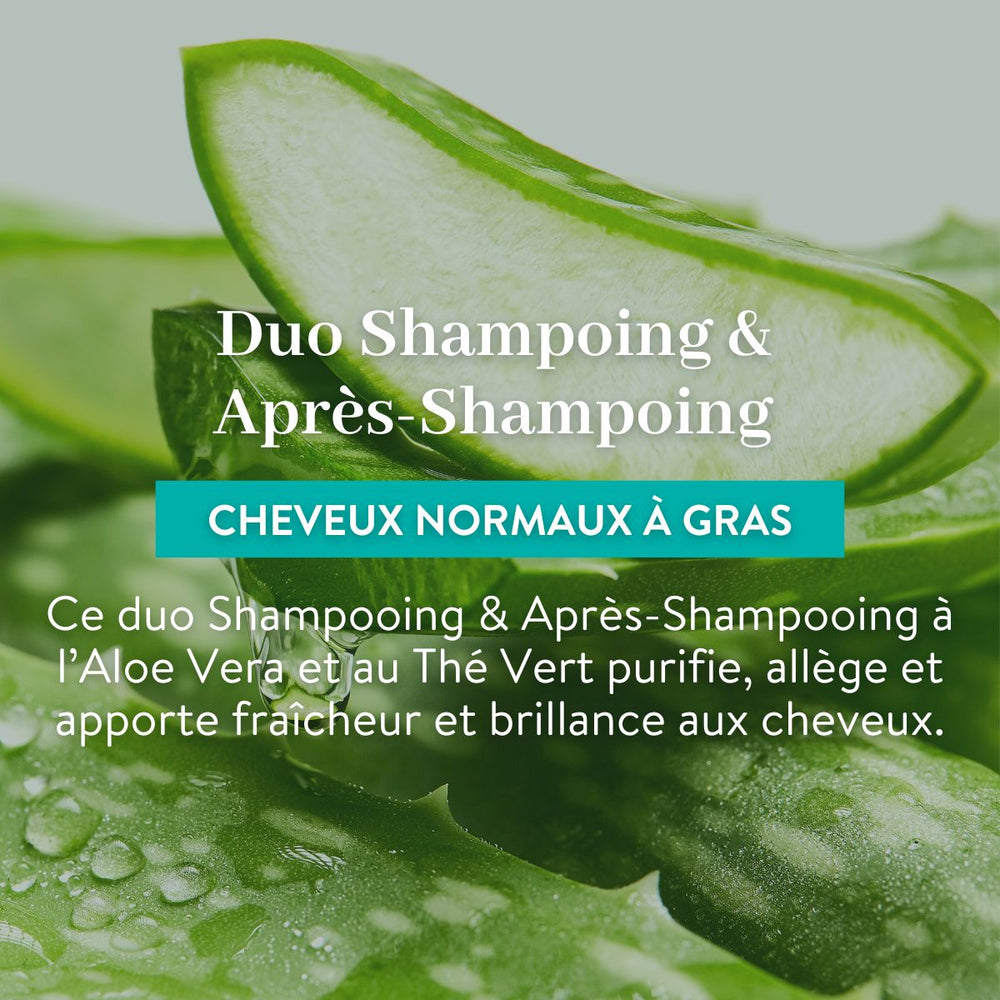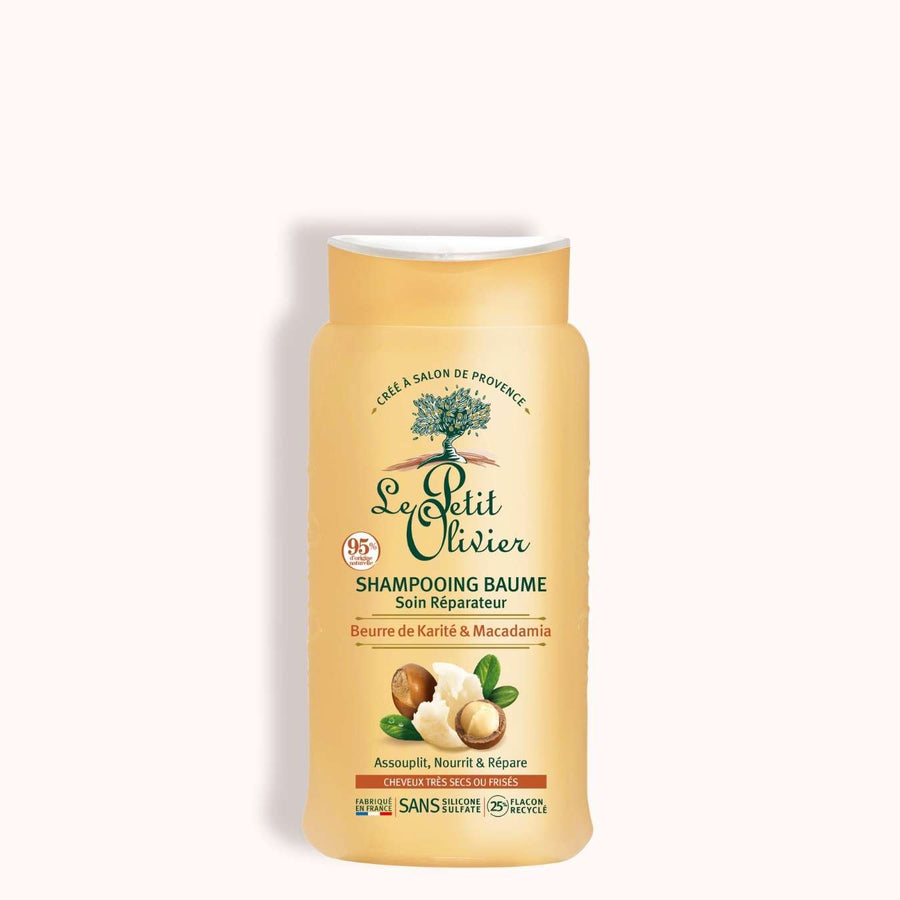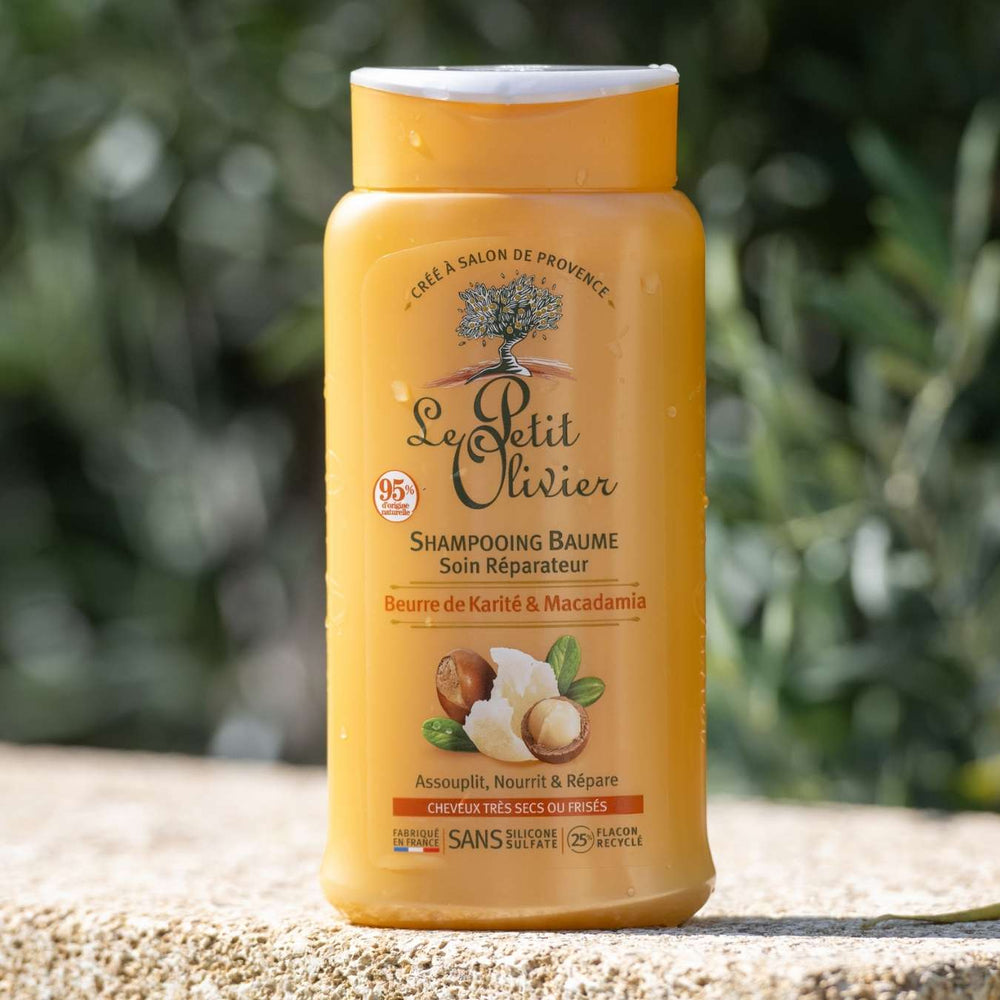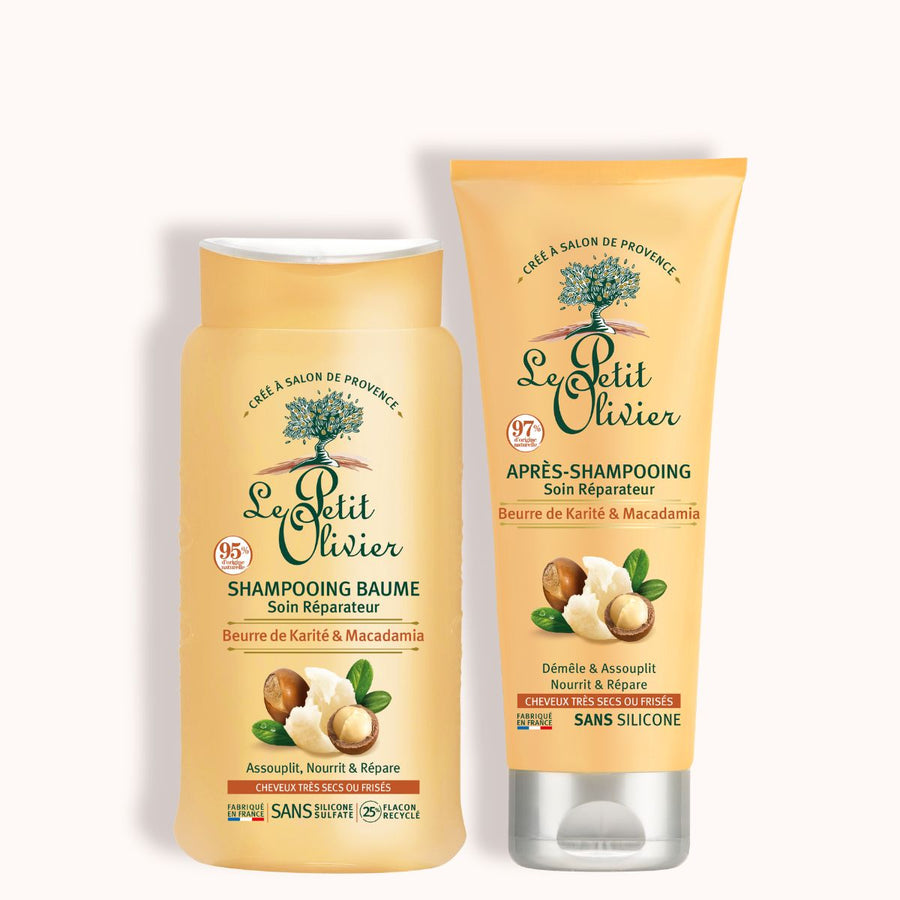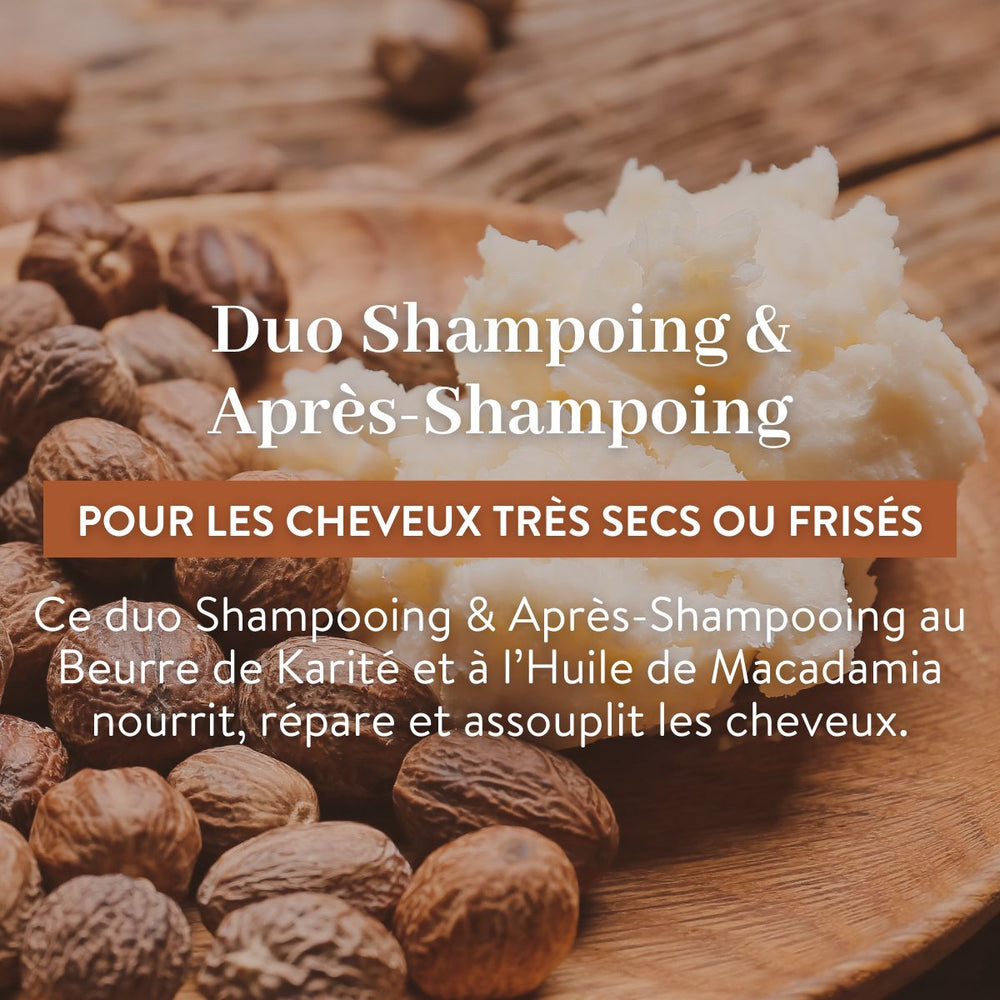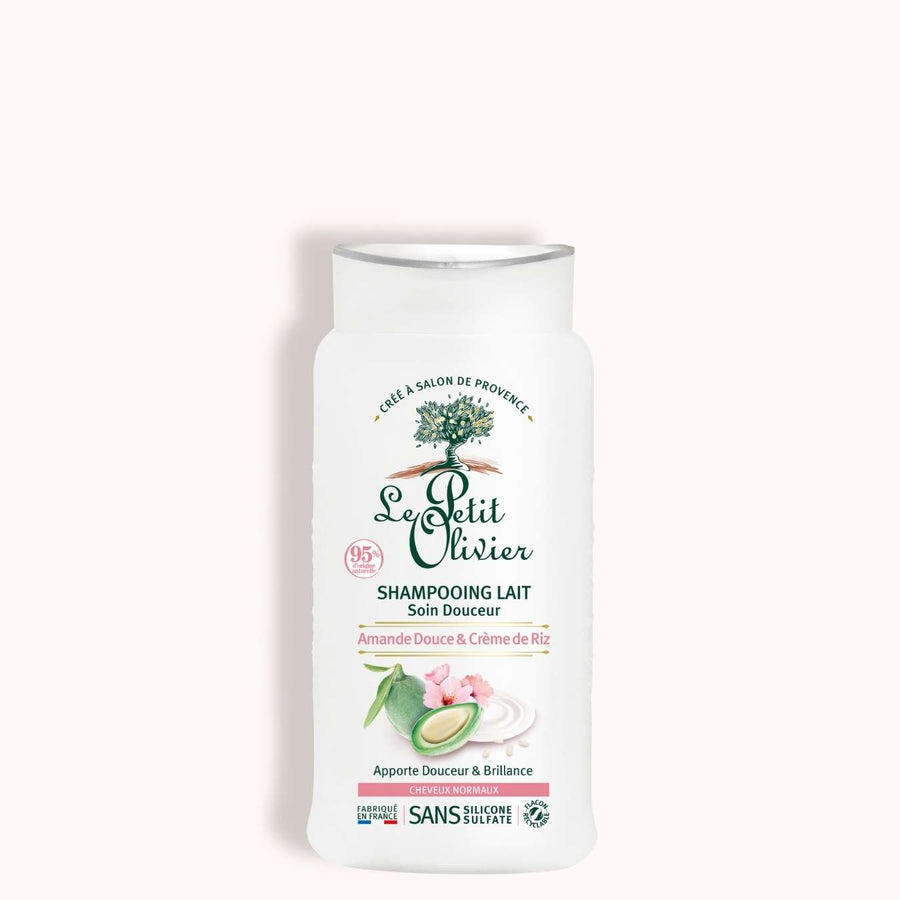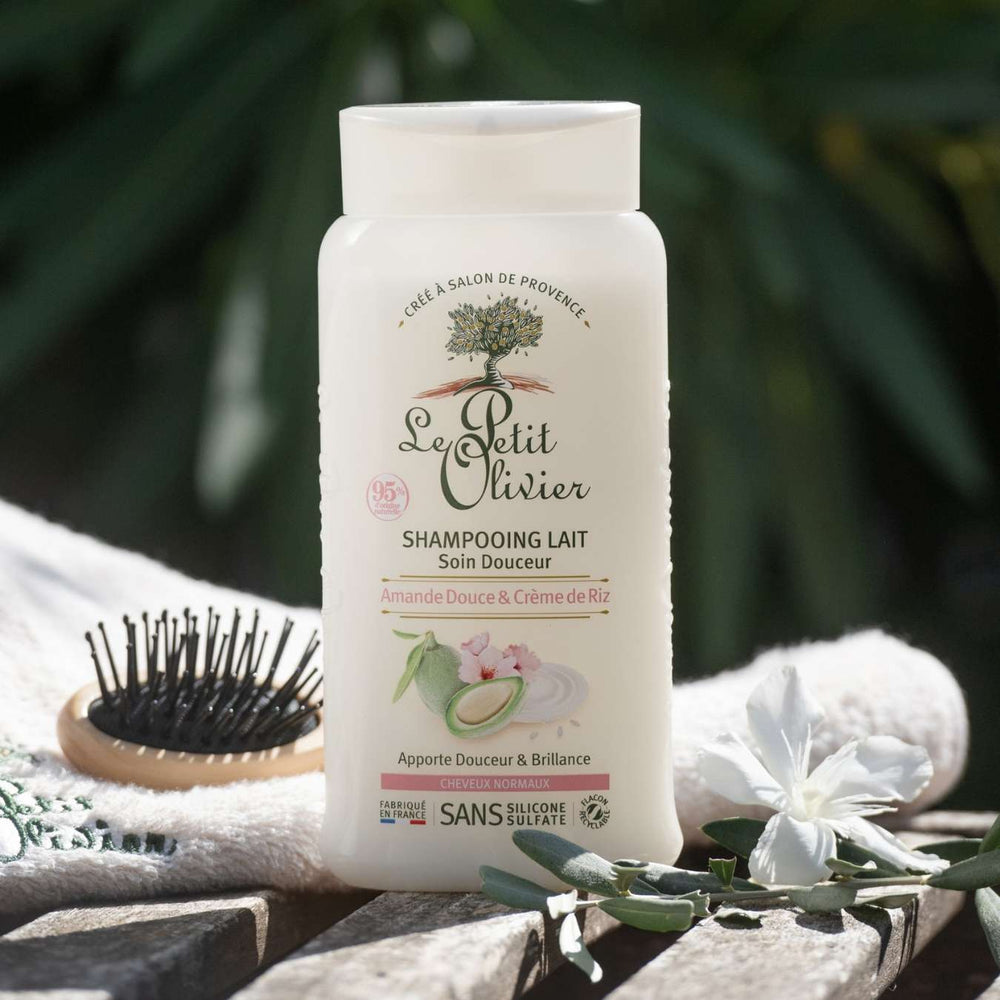All you need to know about shampoos and conditioners
Often perceived as a simple routine, hair care can actually transform your approach to beauty. Choosing the right shampoo and conditioner is no trivial matter: it depends on a detailed understanding of your hair's specific needs. How can you be sure you're using the right products for your hair type? Which active ingredients should you look for to maximize their effectiveness?
Beyond the choice of products, establishing a structured routine is essential. To care for your hair. With its wide range of products Le petit Olivier can guide you through a complete hair ritual. It starts with shampooing, which prepares your hair for subsequent treatments. But what is the ideal frequency of use? And how do you effectively integrate a conditioner to optimize its benefits?
Finally, we'll explore the distinctions between traditional and natural shampoos, to enlighten you on their respective impacts. Get ready to rediscover your daily routine in a whole new light.

How to choose the ideal shampoo for your hair type?
Identify your hair type to choose the right shampoo
Choosing the right shampoo starts with a crucial step: precisely identifying the nature of your hair. Whether you have voluptuous curls, silky-smooth locks or fine hair in search of volume, each hair type has its own needs. For example, curly hair often requires intense moisturizing to prevent frizz and maintain its natural elasticity. Fine hair, on the other hand, will benefit from a lightweight product that won't weigh down the hair fiber. Choose the products best suited to your hair type from the Le Petit Olivier range .

Establishing a hair care routine: what role does shampoo play?
Frequency of shampoo use in a hair routine
Shampoo use should be adapted to the nature and specific needs of your scalp. For normal hair, washing two or three times a week is generally enough to maintain the natural balance without damaging the hair fiber. However, if your scalp produces more sebum, more frequent cleansing may be necessary to avoid excessive oil build-up. Conversely, dry, fragile hair may benefit from more frequent washing to preserve its natural moisture.
Choosing the ideal rhythm also involves considering your lifestyle: do you regularly take part in sporting activities? Do you use styling products on a daily basis? These factors directly influence the optimum frequency for washing your hair.
Shampoo as the first step in complete hair care
Shampooing doesn't just cleanse; it actively prepares your hair for subsequent treatments. A good wash not only removes impurities and product residues, but also opens up the hair cuticle, allowing the active ingredients in your subsequent treatments to work deep down. In this sense, the choice of shampoo is of the utmost importance: it must correspond to the specific needs identified during the initial hair diagnosis.
A concrete example: if your hair is color-treated, opt for a shampoo that protects and enhances color while preserving shine. For those who have to deal with incessant frizz, opt for a product formulated with disciplining agents that will help smooth hair right from this first stage.
How can you maximize the effects of your shampoo?
Application techniques for an effective shampoo
The shampooing ritual, though seemingly simple, conceals subtleties that can transform the effectiveness of your hair care products. Start by thoroughly wetting your hair with warm water to gently open the cuticles, facilitating the product's deep action. Then apply a small amount of shampoo to the scalp, where impurities and sebum are concentrated. A gentle yet firm massage in circular motions stimulates microcirculation while ensuring even distribution of the product.

Why is conditioner necessary for hair care?
Conditioner benefits for hair well-being
Much more than a simple complement to shampoo, conditioner plays a crucial role in maintaining the integrity and beauty of your hair. After washing, the hair fiber can become weakened and exposed to external aggressions. This is where conditioner comes in: by providing a protective layer that seals the cuticles, it helps preserve essential moisture while making detangling easier.
Think of your hair as a delicate fabric; without proper care, it can become rough and brittle. Conditioner acts as a softener, restoring suppleness and softness to your hair. Its specific active ingredients target damaged areas, boosting hair's resilience and reducing the risk of breakage when styling.
For those worried about untamed frizz or split ends, conditioner is an indispensable ally. By intensely nourishing each strand, it helps smooth the hair surface, making your style more disciplined and radiant.
Pamper your hair with le Petit Olivier wide range of conditioners in generous or melting textures.
How to integrate conditioner into your hair routine
Incorporating conditioner into your hair routine requires a few simple but effective steps. After rinsing your shampoo thoroughly, apply a small amount of conditioner to your damp lengths and ends. Avoid the scalp to avoid weighing down your roots.
- Massage gently: this allows the active ingredients to penetrate deep into the hair fiber.
- Leave on: allow a few minutes for the product to take full effect before rinsing thoroughly with lukewarm water.
- Think double care: for very dry or damaged hair, consider a weekly mask to complement your usual conditioner.
Some people may wonder whether this addition will make their daily routine much longer. In reality, it only takes a few minutes to see tangible results: hair that's softer to the touch and visibly healthier in the long term.

What's the difference between shampoo and conditioner?
Separate functions for shampoo and conditioner
In the world of hair care, shampoo and conditioner play complementary yet distinct roles. Shampoo focuses primarily on cleansing the scalp and hair. It removes impurities, styling product residues and excess sebum accumulated over the days. This process restores the hair's natural shine and prepares the hair fiber for further treatments.
Conditioner is used after deep cleansing to provide additional protection. Its primary function is to smooth the hair cuticle, making detangling easier and reducing the risk of breakage. By providing softness and suppleness, it acts as a protective barrier against external aggressors such as pollution or the heat of styling appliances.
When to use shampoo and conditioner in your routine
Here are a few tips for incorporating these products into your routine:
- Shampoo: use two or three times a week, depending on your scalp type. More frequent use could be considered if you tend to produce a lot of sebum, or if you regularly engage in strenuous physical activity.
- Conditioner: apply systematically after each wash with shampoo. Concentrate on the lengths and ends to avoid weighing down your roots.
How does using a natural shampoo benefit your hair?
The benefits of natural active ingredients in shampoos
The appeal of natural shampoos lies in their ability to sublimate your hair while respecting its integrity. Unlike conventional products, often loaded with sulfates and other harsh chemical agents, natural formulations rely on gentle active ingredients that preserve thebalance of the scalp. Imagine a treatment that cleanses your hair without compromising its natural shine; that's exactly what these healthier alternatives promise.
Among their many benefits, natural shampoos stand out for their soothing and regenerating properties. They contain botanical extracts with recognized properties to soothe irritation and strengthen the hair fiber. This makes them particularly suitable for those with sensitive or itchy scalps. By choosing a product formulated with these caring active ingredients, you're offering your hair a truly gentle treatment.
Impact of natural shampoos on long-term hair condition
For those committed to an eco-responsible approach, opting for a natural shampoo is also an environmentally conscious choice. These products often use recyclable or biodegradable packaging, reducing your ecological footprint while caring for your hair's beauty.
